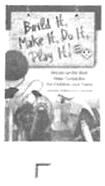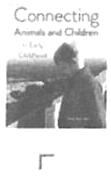题型:阅读理解 题类:常考题 难易度:普通
北京市东城区2019-2020学年高一下学期英语期末统一检测试卷
Rave-on!
How about learning new skills on the guitar, drums and keyboard by video? Follow the touch-screen instructions to find lessons on each instrument, or search for a song to practice playing along to. Try our Professional Selection, with video clips of band members who will explain the techniques that make their recordings so individual.
Show-in-a-day!
Be a star singer or dancer for the day in a one-time-only special performance! Experts in international music and dance styles will train you, and costumes provided for the performance help create a really special, individual show. Get your friends and family to come and see you perform, as no videoing or photography is allowed.
ArchivedImages
Want to find out about a new band, or just want more information about an old favourite? Visit our collection to find out facts and figures, or see the actual possessions of famous bands and musicians you are interested in. You can actually get to touch things worn on stage at major rock and pop events, and there are plenty of other concert souvenirs.
Rhythm-studio
Get your body moving in the studio and learn to move to rhythms and sounds from the past to now, including Soul and Disco. Learn your steps from our professional onscreen dance instructor, then watch your performance and become the star in your own video recording which you can take away!

| Refine Your Search Remove all them Year Published 2016( 9 ) 2015( 90 ) 2014( 290 ) 2013( 118 ) 2012(62 ) Show more…… Language English(637 ) German(2) Category Education(639) Social Science(27) Medicine (15) Psychology(11) Language/Linguistics (10) | Build it ,Make it ,Play it ! Guides for Children and Teens Bomhold Catharine ; Elder Terri,2004 l ABC-CLIO Series: Children's and Young Adult Literature Reference Available For busy librarians and educators ,finding instructions for projects ,activities ,sports ,and games that children and teens will find interesting is a constant challenge, This guide is a time-saving, one-stop…. Read this book l View details l Add to Collection  |
| Circle Time for Young Children Mosley Jenny,2014 l Taylor and Francis Series: Essential Guides for Early Years Practitioners Available Jenny Mosley's quality circle time model involves setting up an on-going, timetable process Of circle-meeting for adults and children ,As a basis for teaching relationship skills, building up self-esteem….. Read this book l View details l Add to Collection  | |
| Connecting Animals and children in Early Childhood Selly Patty Born,2014 l Redleaf Press Available Understand the value of connecting animals and children .From familys pets and wild animals to toys ,stuffed animal ,and media images ,animals are a central part of every child's world .This book examines…. Read this book l View details l Add to Collection  | |
| Education and Disadvantaged Children and Young People Matsumoto Mitsuko; Brock Colin,2013 l Bloomsbury Publishing Series: Education as a Humanitarian Response Available Do street children go ti school ,and if not ,why not? What kind of education can be ‘meaningful' to young people affected by conflict? The contributors explore groups of children and young people who have…. Read this book l View details l Add to Collection  | |
| Children with School problem: A Physician's Manual The children pediatric Society; Andrews Debra;Mahoney WilliamJ,2012 I wiley Available The physician's guide to diagnosing and treating learning disabilities in children.1 to 10 Canadians have a learning disability,and doctors must be able to identify, diagnose,treat,and manage children… Read this book I view details I Add to Collection  | |
| Songs in Their Heads:Music and Its Meaning In Children's Lives Campbell Patricia Shehan,1989 I Oxford University Press Available This book explores the intrest and needs of children in their expressed thoughts and actual “musicking” behaviours, This text examines the songs they sing,the rhythms… Read this book I view details I Add to Collection  | |
| Young Children as Artists: Art and Design in the Early Years and Kay Stage 1 Tutchell Suzy 2014 I Taylor Francis Available From the monment a child is born, they interact with the world, looking at colors, feeding textures; constructing mental and physical images of what they see and experience. Within all early years… Read this book I view details I Add to Collection  | |
| Big Ideas for Little Kids: TE Aching Philosophy Through Children's Literature Wartenburg Thomas E.2014 I Rowman&Littlefield Publishers Available Big Ideas for Little Kids includes everything a teacher, or a college student needs to teach philosophy to elementary school children from picture books. Written in a clear and accessible style… Read this book I view details I Add to Collection  |
试题篮